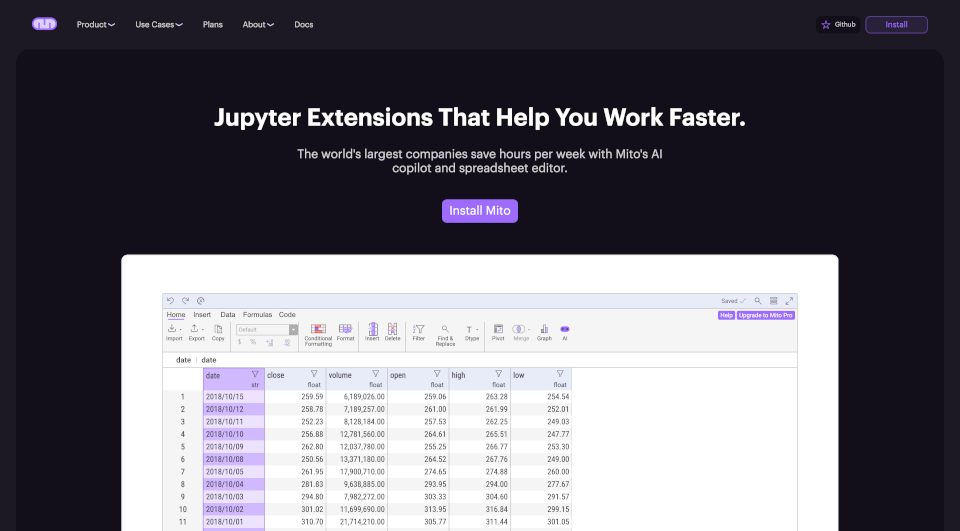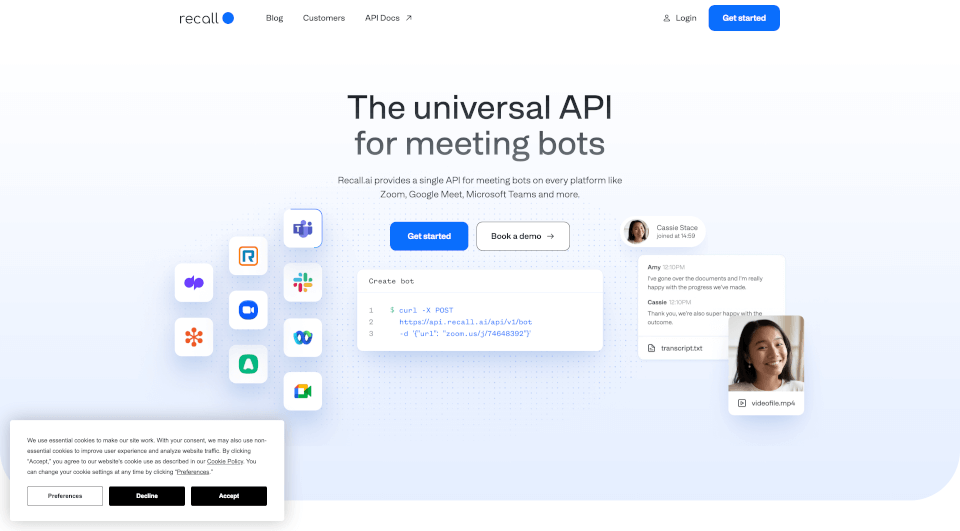What is Modal?
Modal is a high-performance AI infrastructure platform designed for developers, particularly those working on AI, machine learning, and data-intensive applications. Offering a serverless cloud environment, Modal enables users to run CPU, GPU, and data computations at scale without needing to manage the underlying infrastructure. With its focus on ease of use and rapid deployment, Modal transforms how developers approach AI workloads, allowing them to focus on coding and innovation.
What are the features of Modal?
-
Seamless Autoscaling: Modal automatically adjusts resource allocation based on workload demands, scaling up to hundreds of GPUs seamlessly. This flexibility ensures that applications remain responsive and efficient, regardless of fluctuations in demand.
-
Fast Cold Boots: One of Modal's standout features is its ability to load large model weights in seconds, drastically reducing the time taken to start applications and handle requests.
-
Flexible Environments: Users can bring their own container images or build one in Python, easily leveraging state-of-the-art GPUs like A100s and H100s. This adaptability allows developers to utilize a wide range of tools and libraries to meet their specific needs.
-
Powerful Compute Primitives: Modal provides simple fan-out parallelism that scales to thousands of containers with a single line of Python code. This makes it easy to run computations in parallel, dramatically speeding up processing times.
-
Built-In Debugging Tools: Troubleshooting is made efficient with Modal's integrated debugging tools, including an interactive shell for quick inspections and breakpoints to help pinpoint issues swiftly.
-
Job Scheduling: Modal’s powerful scheduling capabilities allow users to set up cron jobs, manage retries, and define timeouts. This ensures that resources are optimally used and that jobs are executed in a timely manner.
-
Web Endpoints: Developers can effortlessly deploy and manage web services, complete with custom domain setups, secure HTTPS endpoints, and support for streaming and web sockets.
What are the characteristics of Modal?
Modal is engineered to handle high-scale workloads while remaining serverless. This means users can experience the immense power of supercomputing without the usual overhead of managing servers. With its pay-as-you-go pricing, users are charged only for the compute resources they utilize, which can be as short as a second. This makes Modal not just powerful but also cost-effective.
What are the use cases of Modal?
Modal is crafted for a variety of application scenarios, including:
-
Generative AI: Develop and deploy live inference for generative AI models, enabling applications such as natural language processing, image generation, and more. Modal can scale to suit your needs, whether you're running a small project or a massive system.
-
Fine-tuning and Training: Fine-tune existing models or train new ones without the headaches of infrastructure management. With access to Nvidia H100 and A100 GPUs provisioned in seconds, developers can run multiple experiments in parallel efficiently.
-
Batch Processing: Process massive datasets with ease. Modal's architecture supports high-volume workloads, making it ideal for applications that require extensive data analysis or manipulation.
-
Sandboxing Code: Modal provides a secure environment for testing and sandboxing code. Developers can verify functionality without risking interference with other applications.
-
API Development: Quickly develop and deploy RESTful APIs to serve machine learning models. Whether you’re building a chatbot or a recommendation engine, Modal enables seamless integration and scaling.
How to use Modal?
Getting started with Modal is straightforward:
- Sign Up: Create an account on the Modal platform.
- Install the SDK: Include the Modal SDK in your Python environment.
- Create Your Model: Write your model prototype in Python, ensuring you incorporate Modal's provided decorators for seamless scaling and deployment.
- Deploy and Scale: Use Modal’s easy deployment options to launch your application, and watch as it automatically scales with your workloads.
Modal Pricing Information:
Modal operates on a pay-as-you-go pricing model, ensuring that users only pay for the resources they consume. Here are some key pricing points:
- Nvidia H100: $0.001267 per second
- Nvidia A100 (80 GB): $0.000944 per second
- Nvidia T4: $0.000164 per second
- CPU: $0.000038 per core per second (minimum of 0.125 cores per container)
- Memory: $0.00000667 per GiB per second
Each month, users receive $30 of compute on the house, making it an affordable choice for small teams and independent developers.








